
NEW FRONTIERS
slovak-austrian and slovak-czech confrontations
In March, a confrontational exhibition of Austrian and Slovak experimental tendencies in architecture took place at the DESIGN FACTORY in Bratislava. It was organized by Florian Medicus (Supervision) on the Austrian side and by Ján Bahna and Tomáš Amtmann on the Slovak side. Twenty-six exhibition "L" elements hosted twenty-six exhibitors. One for each exhibitor to present their authorial statement. The long vertical with a short horizontal created the space for individual positions.
The sculptural element from the exhibition creators Lukas Göbl and Oliver Ulrich (Explicit Architecture) flirted with many meanings, more closely related to the Austrian and Western architectural context: from the interpretation of the "Architectural Alphabet" by the margrave's regional building inspector Johann David Steingruber (1702 - 1787), to the generated letters from the geometric structures of architect Heidulf Gerngross, to citations of initials by Loos, Le Corbusier, Leonidov, or Libeskind. For Slovaks, a symptomatic parallel with the double "L" in the name of Emil Belluš could have been significant, who, unlike Dušan Jurkovič, bypassed Vienna during his studies in Budapest and Prague. Thus, the common symbol for seventeen Austrian and nine Slovak studios might have been the language of global "L-systems."
This is already the second confrontational appearance of the emerging generation of Slovak architects, who studied (mostly) at Bratislava’s architectural schools after 1990, thus seemingly creating awareness not only of a new boundary between generations of architects but also of the emergence of progress and innovation among the new "frontmen" of experimental tendencies in architecture. By showcasing both Czech-Slovak and subsequently Austrian-Slovak comparative projects in the same exhibition space within a month, a unique opportunity arose for critics to assess the current emerging Slovak architectural generation in the context of Austrian and Czech vectors, as well as to compare the situation in two pivotal centers for Slovaks in Prague and Vienna, the geographically and culturally closest neighbors. The seemingly close, yet mentally distant "hour away" Vienna and the brotherly understandable "three hours away" Prague present Bratislava with apparent permanent problems, but also with rescues. The Bratislava position and the significance of its architecture is highly valued precisely by sharpening and zooming in between the Prague and Vienna optics.
The confrontation "Twenty After Twenty" ended unexpectedly well for Slovaks, while the duel "New Frontiers" was not as positive. While Slovaks shone in the Czechoslovak project with a better selection of exhibitors, a suitable theme, and a manageable scale, they had yet to match the intellectual potential of the Austrians. Nor would broader or larger representation, higher budgets, or a more favorable financial situation likely have helped them. The exhibitions revealed a significant "gap" between Czechoslovakia and Austria, between the "transforming" and the "established." Even the texts in the accompanying catalogs are diametrically different. While Gebrian's critical analysis sharply critiques stagnant Czech conditions, Vaško's essay merely grapples with Slovak "self-identification," Lootsmova's study of the "Kennedy New Frontiers" comprehensively synthesizes the theme and space, and Medicus's contribution comments on the current time in contemporary vocabulary. While both catalogs somewhat distort the exhibition projects and thus obscure the direct messages of the exhibitions (the Czechoslovak one is overly extensive, detailed, and unclear, while the Austrian-Slovak one is more precise than the exhibition itself), the exhibitions expressed this directly and bluntly. The architecture of abstracted trees did little to aid the theme of doghouses and birdhouses, which, although banal, accurately characterized not only the brotherly nations but also the descriptive level of architecture. Abstract Austrian "L-systems" set a standard that was hard to climb over with formal gestures, designer installations, or unreadable messages. Moreover, the carefully selected groupings in Slovakia did not offer enough representative partners for their Austrian counterparts. The Slovak scene was underrepresented in numbers and did not reflect the potential it has. From the refined Austrian objects, tendencies and a clear influence from the Prix school could be felt. The installations had space and detail; their spirituality could be developed into larger installations.
It is an undeniable fact that the situation is changing dramatically and is incomparable to recent conditions. The major architectural stars are competing for the Slovak architectural competition (PENTA - Čulenova zone), and the Prešov studio zero-zero won Europan in Budapest. Austrians are seeking opportunities for confrontations in new territories with their initiatives, and discussions about the architecture of Parallel Modernism are taking place abroad. Excursions by Emil Přikryl or András Pálffy are planned across Slovakia. However, the Slovak scene is still fragile and weak, still unfinished in the cultural vacuum and frequent historical cuts and interruptions, even though it can now show and compare. Its image still depends on the type of mirror and angle of view. We see it differently from Prague, and differently from Vienna, yet unobscured in both views.
Imro Vaško
Philipp Aduatz (A) www.suppancontemporary.com
ampula Ján Ťupek (SK) www.ampula.com
ARCHIMERA (SK) www.archimera.sk
BEEF R. Buzinkay, A. Ferenčík, J. Viskupič (SK) www.beef.sk
Hubert Blanz (A) www.blanz.net
BYRO Marek Bohunický (SK) www.byro.sk
columbosnext (A) www.columbosnext.com
Markus Leixner (A) www.doctorstevbob.com
Explicit Architecture Lab Lukas Göbl, Boris Steiner, Oliver Ulrich (A)
www.explicit-architecture.com
Gabu Heindl Architects (A) www.gabu-wang.at
HEIN-TROY Matthias Hein, Juri Troy (A) www.hein-troy.at
heri&salli Heribert Wolfmayr, Jozef Saller (A) www.heriundsalli.com
Gregor Holzinger (A) www.staniposset.net
Idealarch Tomáš Amtmann (SK) www.idealarch.sk
Clemens Kirsch (A) www.ckirsch.com
K[raft Marc Hoffenscher, Alexander Diem (A) www.fj5.org
Malaga Lukáč Peter Malaga Martin Lukáč (SK) www.buoy-a.com,
www.olio.sk
moh architects (A) www.moh-architects.com
n/a Benjamín Bradňanský, Víto Halada (SK) www.nla.sk
soma (A) www.soma-architekten.at
SPUTNIC Norbert Steiner (A) www.sputnic.at
Peter Stec (SK) www.peterstec.net
t-hoch-n G. Binder, P. Wiesinger, A. Pichler (A) www.t-hoch-n.com
ta tort Alexandra Berlinger, Wolfgang Fiel (A) www.tat-ort.net
underconstruction P. Kopcek, M. Simek (SK) www.underconstruction.sk
florian unterberger (A)
The sculptural element from the exhibition creators Lukas Göbl and Oliver Ulrich (Explicit Architecture) flirted with many meanings, more closely related to the Austrian and Western architectural context: from the interpretation of the "Architectural Alphabet" by the margrave's regional building inspector Johann David Steingruber (1702 - 1787), to the generated letters from the geometric structures of architect Heidulf Gerngross, to citations of initials by Loos, Le Corbusier, Leonidov, or Libeskind. For Slovaks, a symptomatic parallel with the double "L" in the name of Emil Belluš could have been significant, who, unlike Dušan Jurkovič, bypassed Vienna during his studies in Budapest and Prague. Thus, the common symbol for seventeen Austrian and nine Slovak studios might have been the language of global "L-systems."
This is already the second confrontational appearance of the emerging generation of Slovak architects, who studied (mostly) at Bratislava’s architectural schools after 1990, thus seemingly creating awareness not only of a new boundary between generations of architects but also of the emergence of progress and innovation among the new "frontmen" of experimental tendencies in architecture. By showcasing both Czech-Slovak and subsequently Austrian-Slovak comparative projects in the same exhibition space within a month, a unique opportunity arose for critics to assess the current emerging Slovak architectural generation in the context of Austrian and Czech vectors, as well as to compare the situation in two pivotal centers for Slovaks in Prague and Vienna, the geographically and culturally closest neighbors. The seemingly close, yet mentally distant "hour away" Vienna and the brotherly understandable "three hours away" Prague present Bratislava with apparent permanent problems, but also with rescues. The Bratislava position and the significance of its architecture is highly valued precisely by sharpening and zooming in between the Prague and Vienna optics.
The confrontation "Twenty After Twenty" ended unexpectedly well for Slovaks, while the duel "New Frontiers" was not as positive. While Slovaks shone in the Czechoslovak project with a better selection of exhibitors, a suitable theme, and a manageable scale, they had yet to match the intellectual potential of the Austrians. Nor would broader or larger representation, higher budgets, or a more favorable financial situation likely have helped them. The exhibitions revealed a significant "gap" between Czechoslovakia and Austria, between the "transforming" and the "established." Even the texts in the accompanying catalogs are diametrically different. While Gebrian's critical analysis sharply critiques stagnant Czech conditions, Vaško's essay merely grapples with Slovak "self-identification," Lootsmova's study of the "Kennedy New Frontiers" comprehensively synthesizes the theme and space, and Medicus's contribution comments on the current time in contemporary vocabulary. While both catalogs somewhat distort the exhibition projects and thus obscure the direct messages of the exhibitions (the Czechoslovak one is overly extensive, detailed, and unclear, while the Austrian-Slovak one is more precise than the exhibition itself), the exhibitions expressed this directly and bluntly. The architecture of abstracted trees did little to aid the theme of doghouses and birdhouses, which, although banal, accurately characterized not only the brotherly nations but also the descriptive level of architecture. Abstract Austrian "L-systems" set a standard that was hard to climb over with formal gestures, designer installations, or unreadable messages. Moreover, the carefully selected groupings in Slovakia did not offer enough representative partners for their Austrian counterparts. The Slovak scene was underrepresented in numbers and did not reflect the potential it has. From the refined Austrian objects, tendencies and a clear influence from the Prix school could be felt. The installations had space and detail; their spirituality could be developed into larger installations.
It is an undeniable fact that the situation is changing dramatically and is incomparable to recent conditions. The major architectural stars are competing for the Slovak architectural competition (PENTA - Čulenova zone), and the Prešov studio zero-zero won Europan in Budapest. Austrians are seeking opportunities for confrontations in new territories with their initiatives, and discussions about the architecture of Parallel Modernism are taking place abroad. Excursions by Emil Přikryl or András Pálffy are planned across Slovakia. However, the Slovak scene is still fragile and weak, still unfinished in the cultural vacuum and frequent historical cuts and interruptions, even though it can now show and compare. Its image still depends on the type of mirror and angle of view. We see it differently from Prague, and differently from Vienna, yet unobscured in both views.
Imro Vaško
Philipp Aduatz (A) www.suppancontemporary.com
ampula Ján Ťupek (SK) www.ampula.com
ARCHIMERA (SK) www.archimera.sk
BEEF R. Buzinkay, A. Ferenčík, J. Viskupič (SK) www.beef.sk
Hubert Blanz (A) www.blanz.net
BYRO Marek Bohunický (SK) www.byro.sk
columbosnext (A) www.columbosnext.com
Markus Leixner (A) www.doctorstevbob.com
Explicit Architecture Lab Lukas Göbl, Boris Steiner, Oliver Ulrich (A)
www.explicit-architecture.com
Gabu Heindl Architects (A) www.gabu-wang.at
HEIN-TROY Matthias Hein, Juri Troy (A) www.hein-troy.at
heri&salli Heribert Wolfmayr, Jozef Saller (A) www.heriundsalli.com
Gregor Holzinger (A) www.staniposset.net
Idealarch Tomáš Amtmann (SK) www.idealarch.sk
Clemens Kirsch (A) www.ckirsch.com
K[raft Marc Hoffenscher, Alexander Diem (A) www.fj5.org
Malaga Lukáč Peter Malaga Martin Lukáč (SK) www.buoy-a.com,
www.olio.sk
moh architects (A) www.moh-architects.com
n/a Benjamín Bradňanský, Víto Halada (SK) www.nla.sk
soma (A) www.soma-architekten.at
SPUTNIC Norbert Steiner (A) www.sputnic.at
Peter Stec (SK) www.peterstec.net
t-hoch-n G. Binder, P. Wiesinger, A. Pichler (A) www.t-hoch-n.com
ta tort Alexandra Berlinger, Wolfgang Fiel (A) www.tat-ort.net
underconstruction P. Kopcek, M. Simek (SK) www.underconstruction.sk
florian unterberger (A)
The English translation is powered by AI tool. Switch to Czech to view the original text source.
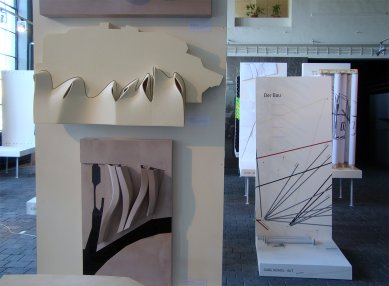
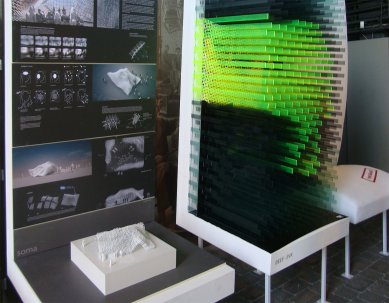

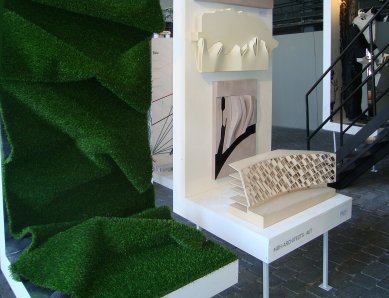
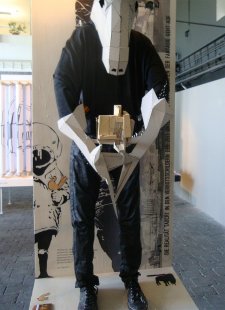
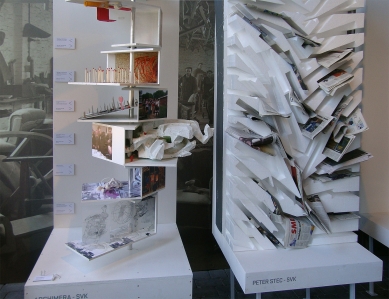
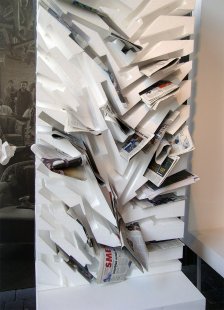
2 comments
add comment
Subject
Author
Date
polepšíme sa
19.04.10 12:57
makačka
19.04.10 01:49
show all comments









